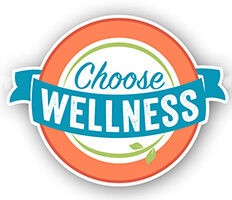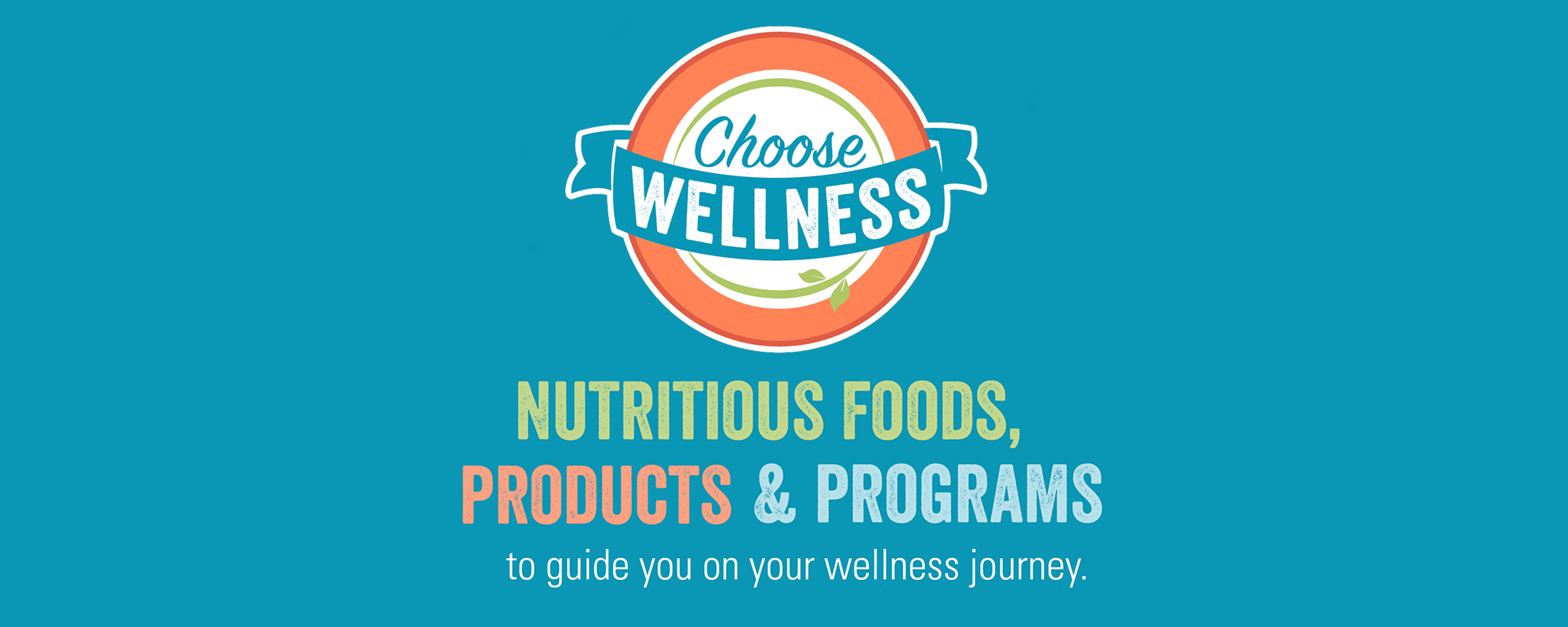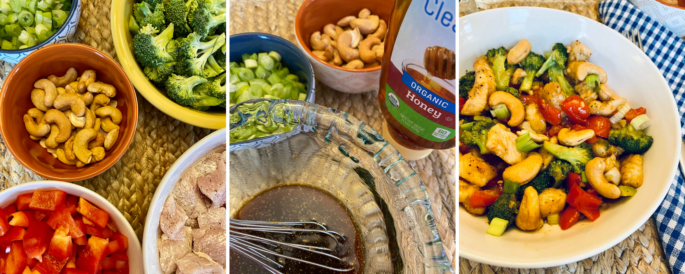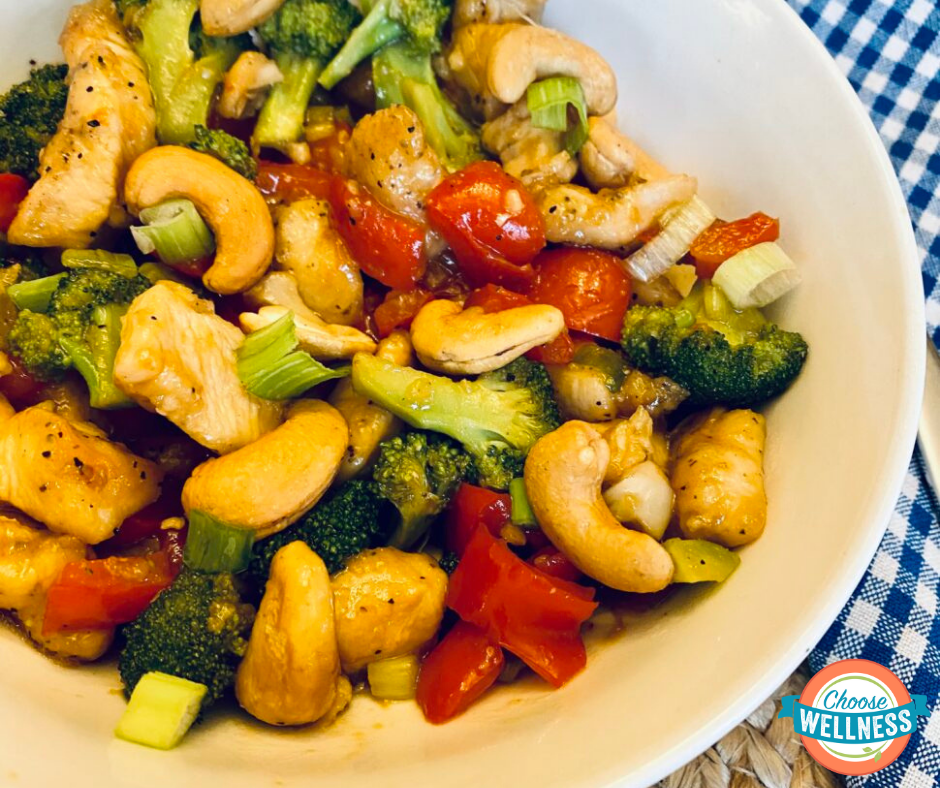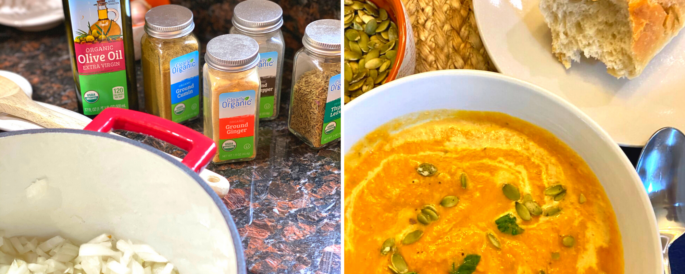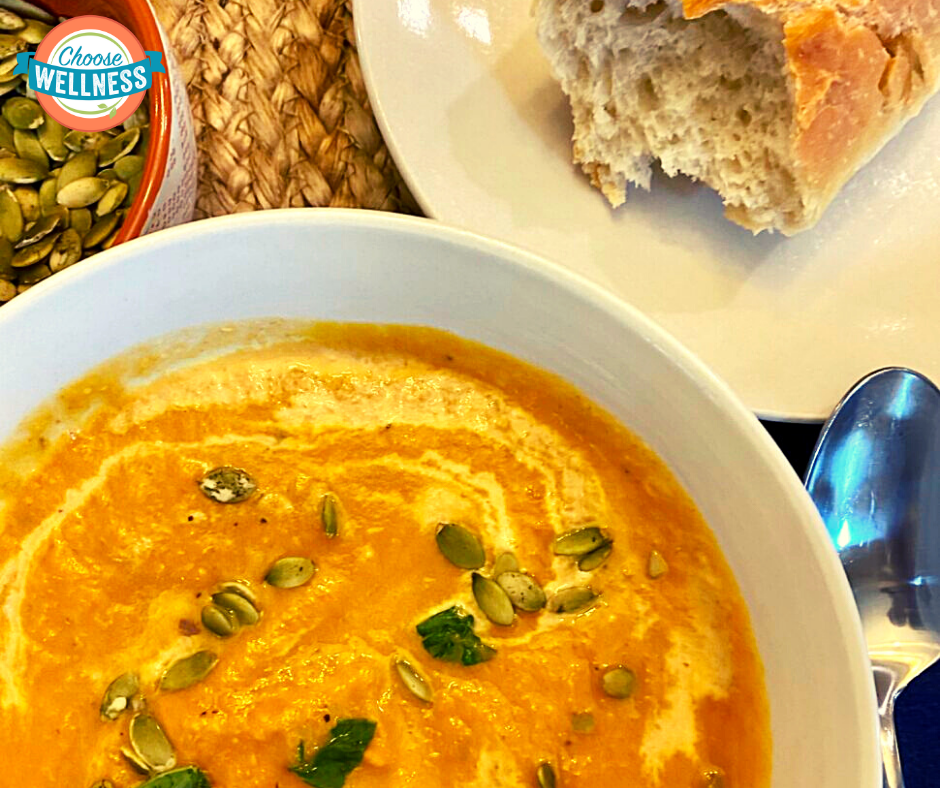1. Eat Breakfast
Start your day with a healthy breakfast that
includes lean protein, whole grains, fruits and
vegetables. Try making a breakfast burrito with
scrambled eggs, low-fat cheese, salsa and a
whole wheat tortilla or a parfait with low-fat
plain yogurt, fruit and whole grain cereal.
2. Make Half Your Plate Fruits and Vegetables
Fruits and veggies add color, flavor and texture
plus vitamins, minerals and dietary fiber to
your plate. Make 2 cups of fruit and 2 ½ cups
of vegetables your daily goal. Experiment with
different types, including fresh, frozen and
canned.
3. Watch Portion Sizes
Use half your plate for fruits and vegetables and
the other half for grains and lean protein foods.
Complete the meal with a serving of fat-free
or low-fat milk or yogurt. Measuring cups may
also help you compare your portions to the
recommended serving size.
4. Be Active
Regular physical activity has many health
benefits. Start by doing what exercise you
can. Children and teens should get 60 or more
minutes of physical activity per day, and adults
at least two hours and 30 minutes per week.
You don’t have to hit the gym – take a walk after
dinner or put on music and dance at home.
5. Get to Know Food Labels
Reading the Nutrition Facts panel can help
you choose foods and drinks to meet your
nutrient needs.
6. Fix Healthy Snacks
Healthy snacks can sustain your energy levels
between meals, especially when they include
a combination of foods. Choose from two or
more of the MyPlate food groups: grains, fruits,
vegetables, dairy, and protein. Try raw veggies
with low-fat cottage cheese or hummus, or a
tablespoon of nut or seed butter with an apple
or banana.
7. Consult an RDN
Whether you want to lose weight, lower your
health-risks or manage a chronic disease, consult
the experts! Registered dietitian nutritionists can
help you by providing sound, easy-to-follow
personalized nutrition advice.
8. Follow Food Safety Guidelines
Reduce your chances of getting sick with proper
food safety. This includes: regular hand washing,
separating raw foods from ready-to-eat foods,
cooking foods to the appropriate internal
temperature, and refrigerating food promptly.
Learn more about home food safety at
eatright.org.
9. Drink More Water
Quench your thirst with water instead of drinks
with added sugars. Stay hydrated and drink
plenty of water, especially if you are active, an
older adult or live or work in hot conditions.
10. Get Cooking
Preparing foods at home can be healthy,
rewarding and cost-effective. Master some
kitchen basics, like dicing onions or cooking
dried beans.
11. Order Out without Ditching Goals
You can eat out and stick to your healthy eating
plan! The key is to plan ahead, ask questions
and choose foods carefully. Compare nutrition
information, if available, and look for healthier
options that are grilled, baked, broiled
or steamed.
12. Enact Family Meal Time
Plan to eat as a family at least a few times each
week. Set a regular mealtime. Turn off the
TV, phones and other electronic devices to
encourage mealtime talk. Get kids involved in
meal planning and cooking and use this time to
teach them about good nutrition.
13. Banish Brown Bag Boredom
Whether it’s for work or school, prevent brown bag
boredom with easy-to-make, healthy lunch ideas.
Try a whole-wheat pita pocket with veggies and
hummus or a low sodium vegetable soup with
whole grain crackers or a salad of mixed greens
with low-fat dressing and a hard boiled egg.
14. Reduce Added Sugars
Foods and drinks with added sugars can
contribute empty calories and little or no
nutrition. Review the new and improved
Nutrition Facts Label or ingredients list to
identify sources of added sugars.
15. Eat Seafood Twice a Week
Seafood – fish and shellfish – contains a range
of nutrients including healthy omega-3 fats.
Salmon, trout, oysters and sardines are higher in
omega-3s and lower in mercury.
16. Explore New Foods and Flavors
Add more nutrition and eating pleasure by
expanding your range of food choices. When
shopping, make a point of selecting a fruit,
vegetable or whole grain that’s new to you or
your family.
17. Experiment with Plant-Based Meals
Expand variety in your menus with budget-
friendly meatless meals. Many recipes that
use meat and poultry can be made without.
Vegetables, beans, and lentils are all great
substitutes. Try including one meatless meal per
week to start.
18. Make an Effort to Reduce Food Waste
Check out what foods you have on hand before
stocking up at the grocery store. Plan meals
based on leftovers and only buy perishable
foods you will use or freeze within a couple of
days. Managing these food resources at home
can help save nutrients and money.
19. Slow Down at Mealtime
Instead of eating on the run, try sitting down
and focusing on the food you’re about to eat.
Dedicating time to enjoy the taste and textures of
foods can have a positive effect on your
food intake.
20. Supplement with Caution
Choose foods first for your nutrition needs. A
dietary supplement may be necessary when
nutrient requirements can’t be met or there is
a confirmed deficiency. If you’re considering a
vitamin, mineral or herbal supplement, be sure to
discuss safe and appropriate options with an RDN
or another healthcare provider before taking.
